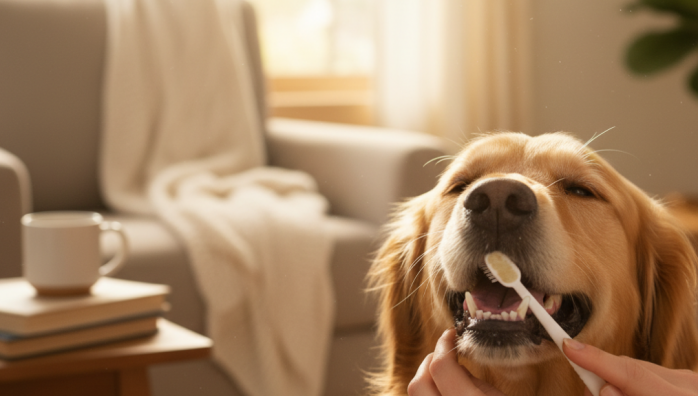Preventing Plaque Buildup on Pet Teeth
by admin in Pet Care Basics 22 - Last Update November 23, 2025

I\'ll never forget the first time my vet gently told me, \"His bad breath isn\'t just \'dog breath\'.\" I thought it was a normal part of having a dog, but it was actually the first sign of plaque buildup that I\'d been unknowingly ignoring. That single comment started me on a deep dive into pet dental hygiene, and I realized how much of my pets\' overall health started right in their mouths. It felt overwhelming at first, but over the years, I\'ve developed a simple, effective routine that has made a world of difference.
Understanding what we\'re up against
Plaque is that sticky, colorless film of bacteria that\'s constantly forming on our pets\' teeth, just like on our own. When it\'s not removed, it hardens into tartar within a few days. I learned that tartar is much harder to get rid of and can lead to serious problems like gingivitis and periodontal disease. Seeing the before-and-after photos of a professional dental cleaning was a huge wake-up call for me. It\'s not just about a pretty smile; it’s about preventing pain, tooth loss, and even systemic infections that can affect the heart and kidneys. Proactive care is truly non-negotiable.
My daily and weekly plaque-fighting toolkit
After a lot of trial and error with my own cats and dogs, I’ve found that a multi-pronged approach works best. Relying on just one method simply isn\'t enough to keep plaque at bay.
The non-negotiable: daily tooth brushing
Honestly, I was so intimidated by this at first. The idea of sticking a brush in my cat\'s mouth seemed impossible. The key, I found, was patience and making it a positive experience. I started by just letting them lick pet-safe enzymatic toothpaste off my finger. Then, I progressed to a finger brush, and finally, a soft-bristled pet toothbrush. We do it at the same time every evening, followed by a favorite treat. It\'s now just part of our routine, and it\'s the single most effective thing I do for their oral health.
Smart choices in chews and toys
Not all chews are created equal. I\'ve learned to look for products specifically designed to have an abrasive action that scrapes away plaque as my dog chews. For my cats, certain dental treats with a crunchy, porous texture seem to help scrub their teeth. I treat these as a helpful supplement to brushing, not a replacement. It’s always a good idea to supervise your pet with any new chew to ensure they\'re using it safely. As with any treat, I always recommend checking with your vet to make sure it\'s appropriate for your pet\'s specific health needs.
The role of diet in dental health
Diet plays a bigger role than I initially thought. While dry kibble can offer some abrasive action compared to wet food, I’ve also found that certain veterinary-approved dental diets can make a noticeable difference. These are formulated with a specific kibble size and texture that helps clean the teeth up to the gumline. I also sometimes use a water additive designed to reduce bacteria in the mouth. It’s a simple, passive way to support their oral hygiene throughout the day.
Knowing when to call in the professionals
Even with the best home care, most pets will eventually need a professional cleaning under anesthesia. I see it as the same as my own twice-yearly visit to the dentist. My vet performs a thorough cleaning, gets under the gumline where I can\'t reach, and takes dental X-rays to check the health of the tooth roots. It gives me peace of mind knowing we\'re catching any potential issues early. This is just what has worked for my family, and I always recommend having an open conversation with your veterinarian to create the best dental care plan for your unique pet.














